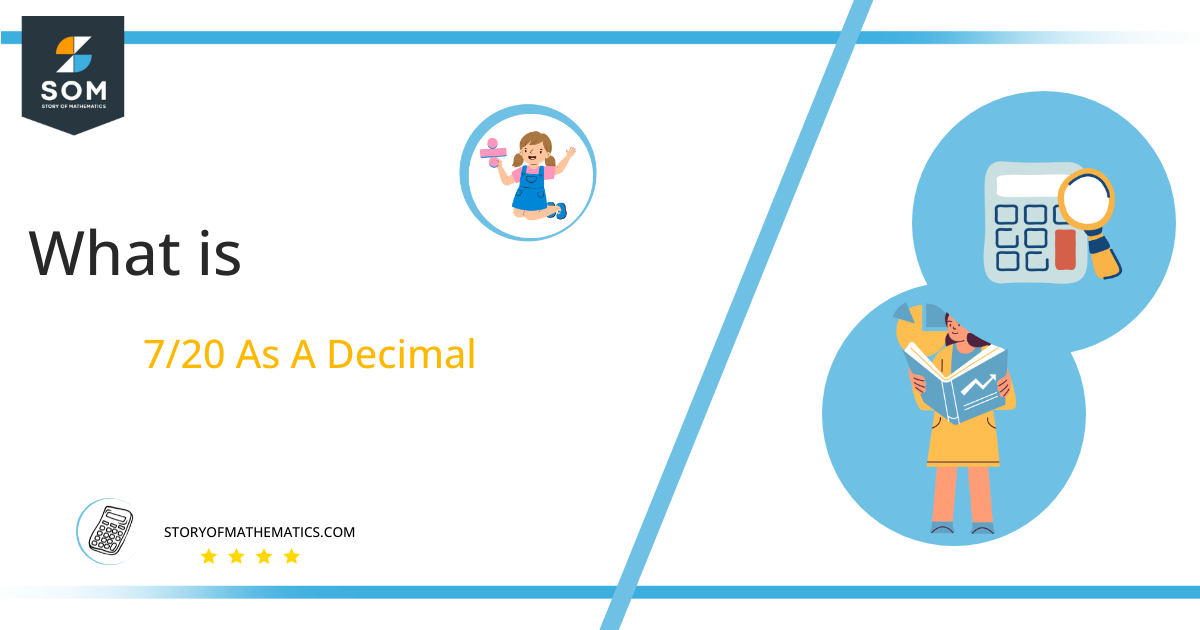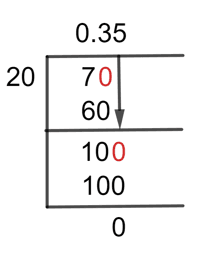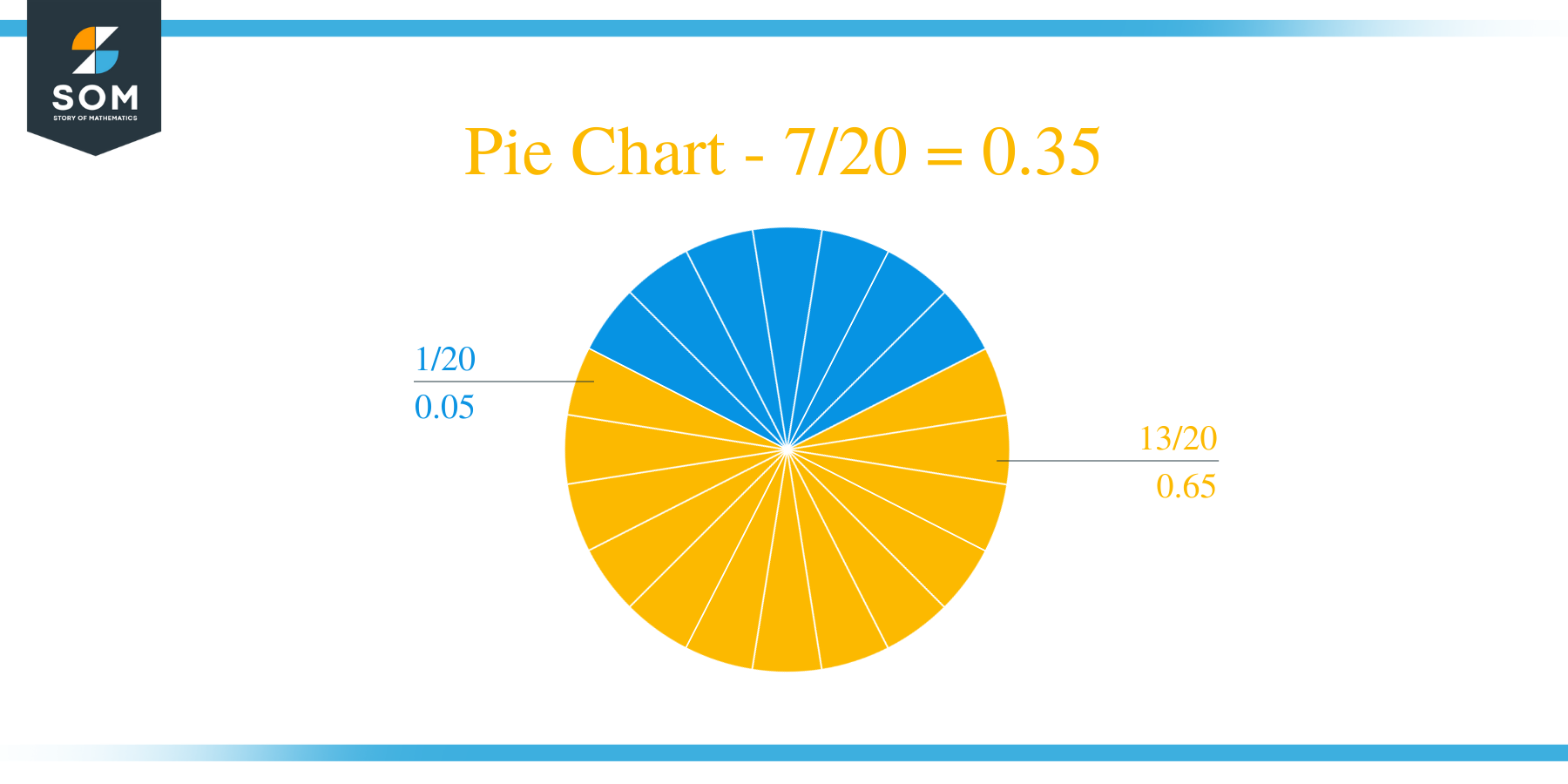What Is 7/20 as a Decimal + Solution With Free Steps
 The fraction 7/20 as a decimal is equal to 0.35.
The fraction 7/20 as a decimal is equal to 0.35.
Fraction is the representation of whole numbers in p/q form. The p represents the Numerator while the q in the fraction is referred to as the Denominator.
A fraction can be solved by using the division operation and the method used to do it is known as the Long Division method.
Solution
Before starting the solution for the fraction 7/20, we need to understand some basic terms. While solving the fraction, the numerator is known as the Dividend and the denominator is named Divisor. In this fraction, 7 is the Dividend, and 20 is the Divisor.
Dividend = 7
Divisor = 20
The final result we get after applying the long division method is referred to as the Quotient. It can be greater or less than 1, depending on the numerator and denominator.
Quotient = Dividend $\div$ Divisor = 7 $\div$ 20
By applying the long division method, the solution of this fraction is:
Figure 1
7/20 Long Division Method
The step-by-step solution of the Long Division method is discussed as:
We have a fraction:
7 $\div$ 20
If the numerator is greater than the denominator, we can directly proceed with our solution but in the case of the numerator having less value than the denominator of the fraction, we first have to add the Decimal Point to proceed with the solution.
In this fraction, we have 7 as a numerator which is less than the denominator 20. So we will start by adding the Decimal Point to the Quotient. By doing so, we can now add the Zero to the right side of the dividend and it becomes 70.
Another important term is used in this method named Remainder. As its name shows, it is the remaining part of the division after every step. If the number is fully divided by another number, then we have a remainder of zero, otherwise, it results in some value.
7 $\div$ 20 $\approx$ 3
Where:
20 x 3 = 60
This results in a Remainder of 10 because 70 – 60 = 10.
The remainder now we have is 10, which is less than the Divisor, so will add zero to the right side of it and now the remainder becomes 100.
Quotient already has the decimal point so no need to add it again. In the next step, we will do the same process used in the previous one and it is given as:
100 $\div$ 20 = 5
Where:
20 x 5 = 100
After this step, the Remainder we have is 0, which means the fraction has its accurate answer and there is no need to solve this fraction further:
The resulting Quotient we have is 0.35 which is the solution for the given fraction 7/20 by using the Long Division method.
Images/mathematical drawings are created with GeoGebra.
